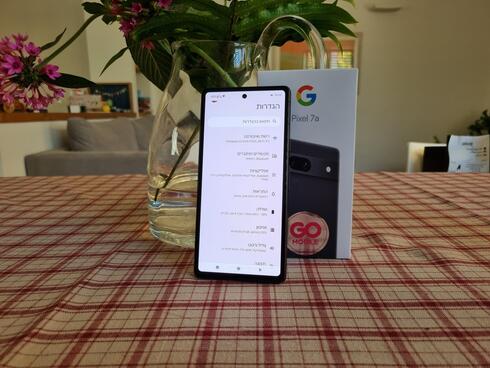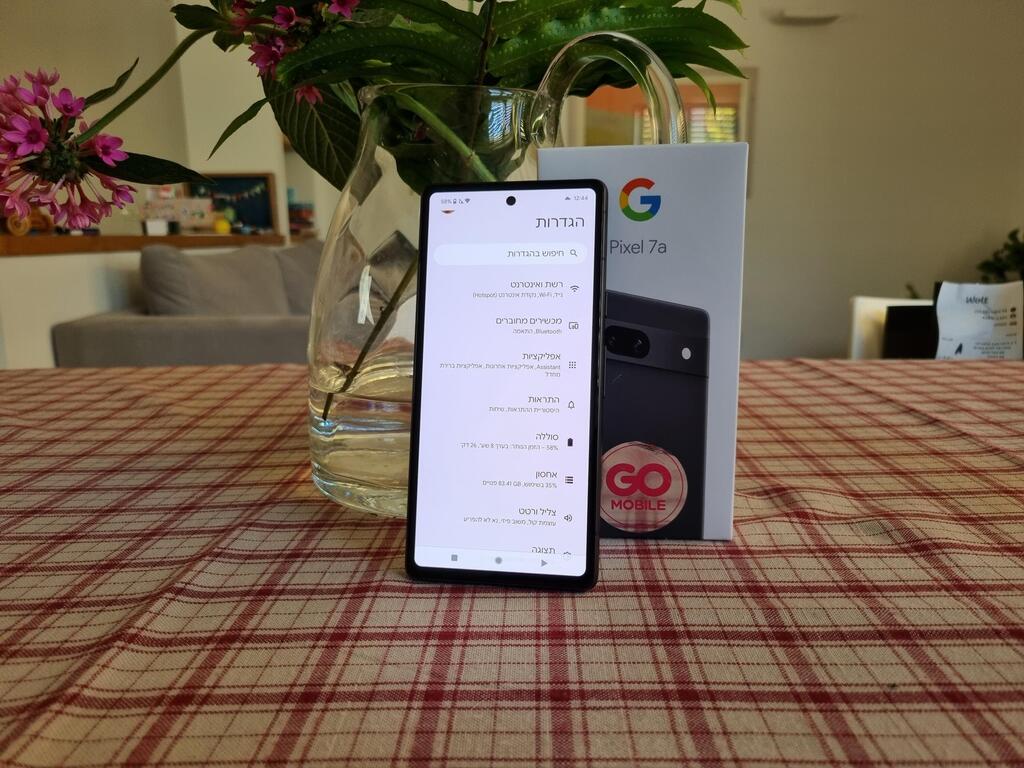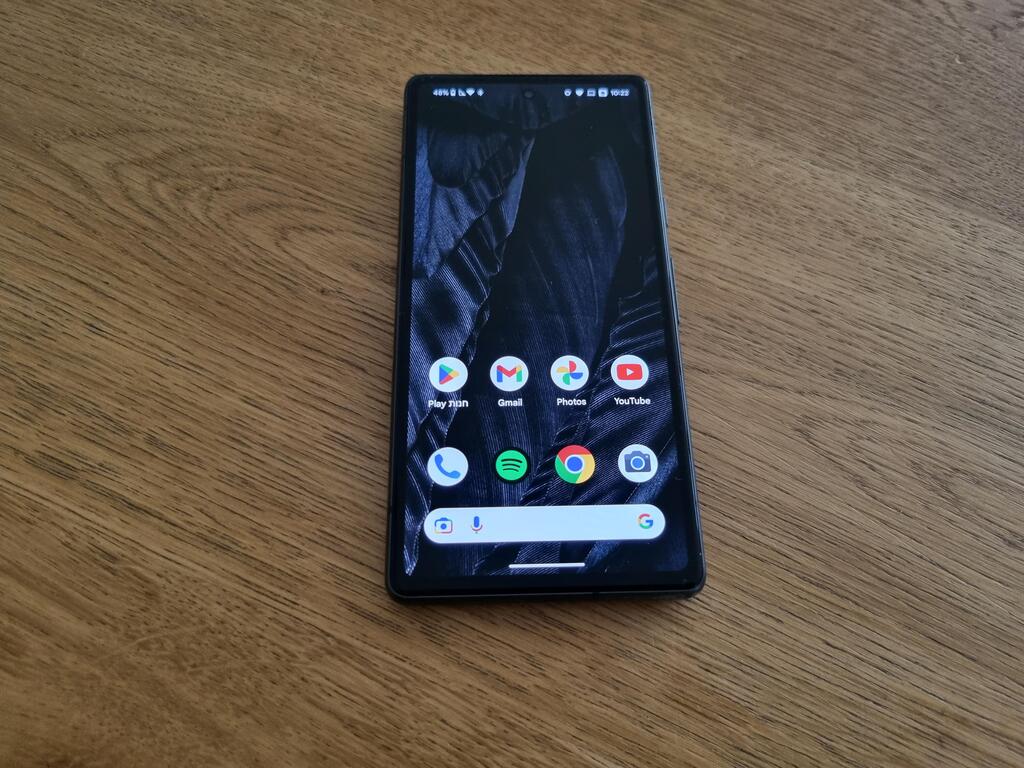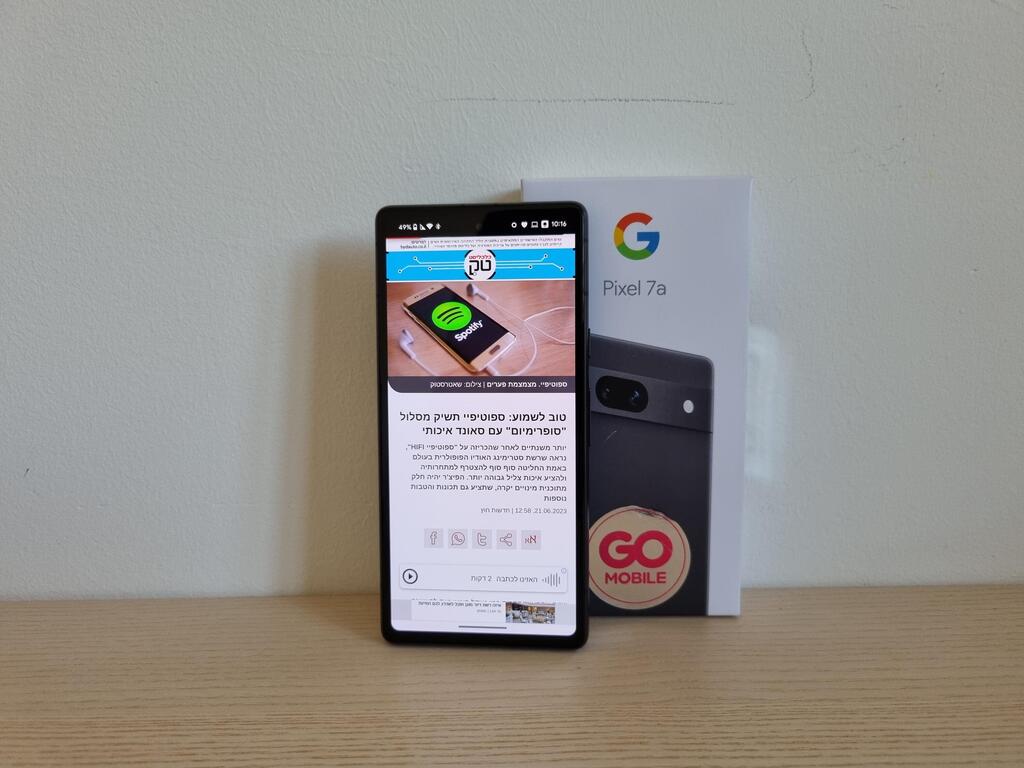
Smartphone review
Google Pixel 7a: Unraveling the allure of clean Android and performance
“The standout advantage is the presence of a pristine Android version, facilitating swift operating system updates. However, it remains uncertain whether this alone is sufficient,” writes Itai Smuskowitz, CTech's smartphone critic
Top Line:
Expectations for a Google device are inherently high, even if it's a relatively inexpensive intermediate model, such as the Pixel 7a. The battery charging rate is notably sluggish, the device demonstrates susceptibility to overheating, storage capacity is relatively limited, and there is no room for expansion – yet, it boasts commendable dust and water protection. Furthermore, the device supports 5G.
The standout advantage is the presence of a pristine Android version, facilitating swift operating system updates. However, it remains uncertain whether this alone is sufficient. Priced at around $500, the Pixel 7a faces competition offering comparable value at cheaper prices, even in the absence of the Google device's aura.
More Smartphone Reviews
Details:
All Android devices are similar to each other, but also different – most manufacturers add their own interface to the system, with slightly different displays, their own apps, more customization options, or rather fewer. There are those that stay closer to 'clean Android', meaning the original user experience that Google intended, and there are those that offer Android in different flavors and shades.
The tone, direction, or vision is outlined by Google, and in recent years, it has illustrated it with its own devices – the Pixel series. Initially, Google offered flagship devices, but later it also included intermediate devices in the series, at affordable and more accessible prices. The latest of these, launched earlier this summer, is the Pixel 7a, which we received for testing courtesy of GoMobile.
Officially, Pixel devices are not widely sold. According to Google, the Pixel 7a is only sold in 17 countries. Nevertheless, it can still be found in many additional countries at a relatively affordable price of a little over $500. So, what does Google's vision look like?
Structure and Design: Not Attractive
The design of the new Pixel is akin to that of its predecessor, the 6a, and both can be characterized as solid – not particularly attractive devices, with flat fronts and selfie cameras that occupy minimal space in the middle of the upper edge of the screen. The cameras on the back of the device protrude slightly from it and are arranged in a strip that spans its entire width.
The volume buttons are located about halfway up the right side, and above them is a power button that also functions as a shortcut to activate Google Assistant. This arrangement is a bit confusing – I had become accustomed to the reverse order, where the volume buttons are at the top and the power button in the middle. Several times, I found myself attempting to turn off the screen with the volume button.
Weighing 193 grams, the Pixel 7a is slightly heavier than its predecessors, yet it doesn't feel burdensome. It is relatively compact, featuring a 'mere' 6.1-inch screen, which seems a bit small when compared to some of its competitors on the market.
One can sense that this is a relatively inexpensive intermediate device – the back is constructed from plastic, which doesn't exude a particularly high quality but isn't overtly basic either; it falls somewhere in between.
The front boasts Gorilla Glass 3, which was also present on the Pixel 5a released two years ago. While it would have been possible to enhance the protection offered to users, doing so would come at a cost. In terms of safeguarding against dust and water, the device adheres to the IP67 standard, implying it should endure water immersion for up to 30 minutes at a height of 1 meter – certainly a satisfactory level.
Hardware: Powerful Enough, But Prone to Heating
The new Pixel is equipped with a Google processor, Tensor G2, and comes in only one version – 8 gigabytes of memory and 128 gigabytes for storage. There are competitors at the same price point offering double the storage capacity and even more memory, but have I already mentioned that the price must remain economical? There is no memory card slot, and you won't find a headphone jack here.
This specification proves to be sufficiently adept for everyday tasks, executed swiftly. However, the device tends to generate heat. I played Call of Duty for a few minutes and noticed the Pixel's temperature steadily rising; at times, it grew warm even during regular usage, without engaging in gaming or intensive activities.
The screen is satisfactory and adequately bright for reading or use in direct sunlight. Nevertheless, in some instances, the display appeared excessively dark, prompting me to manually adjust the automatic brightness, particularly when indoors.
The speakers also fulfill the criteria of an intermediate device – they aren't particularly loud, nor do they offer exceptional quality. While functional, they don't leave a lasting impression.
The Pixel's battery boasts a capacity of 4,385 mAh, and the device supports wireless charging – albeit not of the fast variety. The package excludes a charger, and it took more than 40 minutes to charge from 10% to 50%, even with a 65-watt charger connected. To achieve a full charge, it necessitated nearly two hours, whereas competitors at the same price range can accomplish this in half the time. Consequently, the Pixel is best charged overnight or during commutes, for instance – relying on fast charging for sufficient energy throughout the day isn't advisable.
A fingerprint reader is positioned at the bottom of the screen, operating through an optical method; at times, it exhibits minor glitches, requiring precise finger placement for successful operation. The facial recognition mechanism operated more seamlessly and swiftly.
Software and Interface: Vanilla Android Experience
The operating system is Android 13 in its 'clean' iteration, complete with Google apps. Navigating between screens and menus is accomplished through various finger gestures, without the presence of a home button or back button.
In contrast to certain manufacturers who modify Android to exhibit varying options, Google doesn't expend effort showcasing these alternatives. However, if one explores the system menus diligently, these options can be found. Apps are arranged within their 'drawer', and users can manually transfer them to the main screen.
Additionally, various shortcuts can be configured, although not all are activated by default. For instance, double-tapping the back of the device can activate the flashlight or a designated application. Another activated option involves double-clicking the power button to access the camera.
Camera: Competently Functional, Lacking Extravagance
On the rear of the device resides a pair of cameras – one equipped with a 64-megapixel sensor and a wide camera complemented by a 13-megapixel sensor. The front features a 13-megapixel selfie camera.
The photo application offers a relatively modest selection of options, yet encompasses an array of shooting modes, including slow exposure for generating motion effects. A dedicated mode for night photography exists, although its necessity is questionable – the camera autonomously gauges lighting intensity and triggers the appropriate mechanism.
So, how do the results measure up? The outcomes are commendable, even in daylight, featuring vibrant colors, and night mode performs equally well. The camera adeptly handles relatively dim lighting, presenting a 3-second countdown for capturing and processing details, yielding satisfactory results.
















